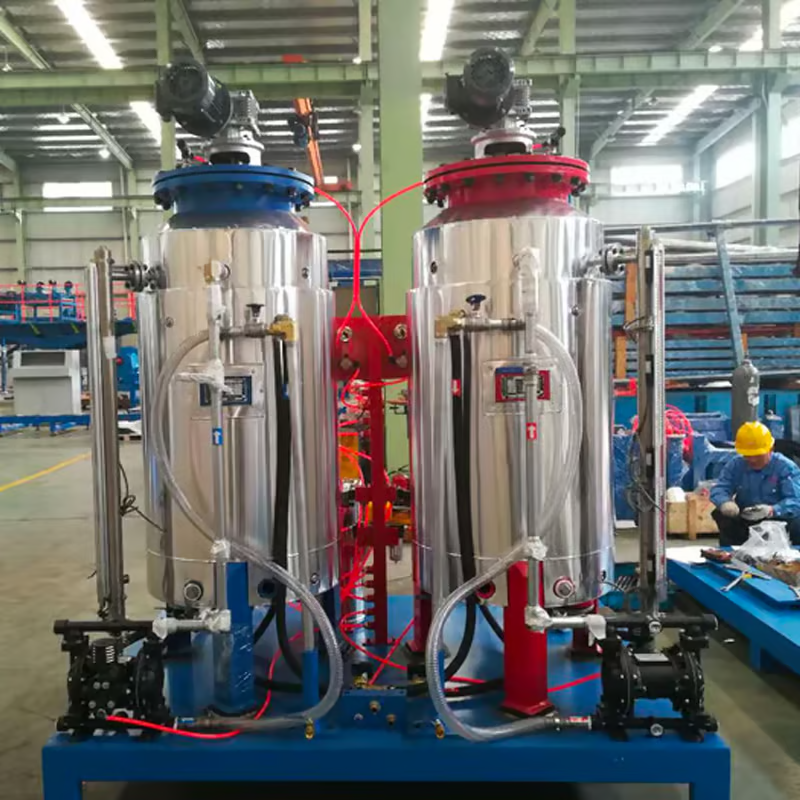A two-component polyurethane high/low pressure foaming machine is a specialized piece of equipment used in the manufacturing industry for producing foam materials. It is capable of mixing and dispensing two separate components, typically a polyol and an isocyanate, at controlled pressures to create a chemical reaction that results in foam formation.
How Does a Two-Component Polyurethane High/Low Pressure Foaming Machine Work?
The machine works by precisely metering and mixing the two components in a designated ratio before they are sprayed or poured into a mold or onto a surface. The chemical reaction between the polyol and isocyanate components creates a foam material with various properties such as density, hardness, and thermal insulation capacity.
Applications of Two-Component Polyurethane Foaming Machines
These machines are commonly used in industries such as construction, automotive, insulation, and furniture manufacturing. They are ideal for producing a wide range of products, including insulation panels, seat cushions, packaging materials, and decorative elements.
Advantages of Using Two-Component Polyurethane Foaming Machines
One of the main advantages of using these machines is their versatility and ability to produce foam materials with different characteristics. They offer precise control over the foam density, hardness, and other physical properties, making them suitable for various applications.
High vs. Low Pressure Foaming Machines
High-pressure foaming machines are typically used for producing rigid foams with high densities and structural integrity. In contrast, low-pressure foaming machines are more suited for flexible or semi-flexible foam products with lower densities and softer textures.
Features to Look for in a Two-Component Polyurethane Foaming Machine
When choosing a foaming machine, consider factors such as mixing ratio accuracy, output capacity, component heating options, cleaning and maintenance requirements, and overall machine reliability. It is essential to select a machine that meets the specific requirements of your production process.
Common Challenges in Operating Foaming Machines
Operators may encounter issues such as inconsistent foam quality, mixing ratio deviations, component clogging, or equipment maintenance problems. Proper training, regular maintenance, and following manufacturer guidelines can help address these challenges effectively.
Importance of Safety Measures when Using Foaming Machines
Working with polyurethane components involves handling potentially hazardous materials that can cause skin irritation, respiratory issues, or fire hazards. It is crucial to follow safety protocols, wear protective gear, and provide adequate ventilation in the working environment.
Trends in Two-Component Polyurethane Foaming Technology
Recent advancements in foaming machine technology include automation features, digital controls, remote monitoring options, and eco-friendly foam formulations. These innovations aim to improve production efficiency, product quality, and sustainability in the foam manufacturing industry.
Choosing the Right Foaming Machine for Your Business
Whether you are a small-scale manufacturer or a large industrial company, selecting the right two-component polyurethane foaming machine is crucial for achieving consistent foam quality, production efficiency, and product innovation. Consider your specific production needs, budget constraints, and long-term growth goals when investing in foaming equipment.
Quote Inquiry
Contact us!

